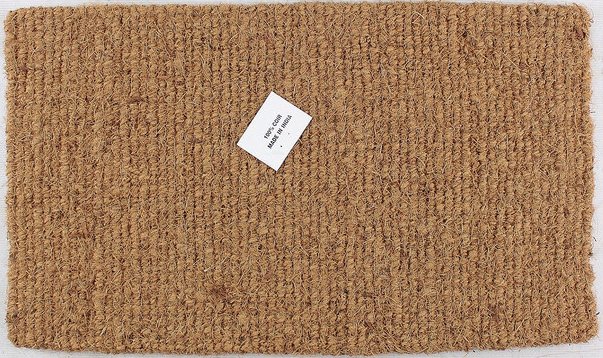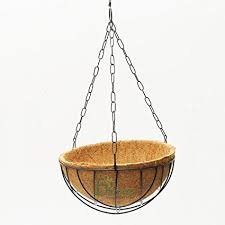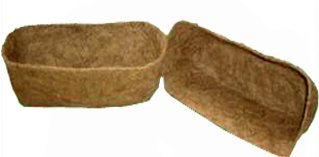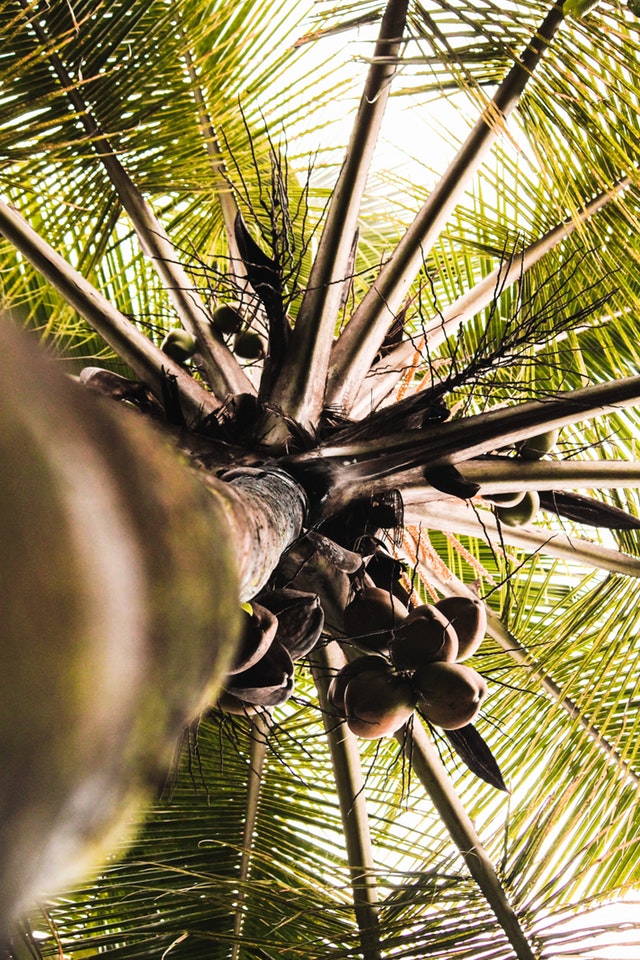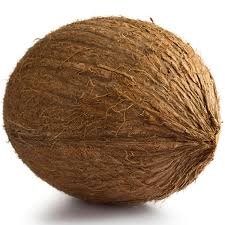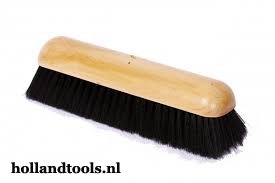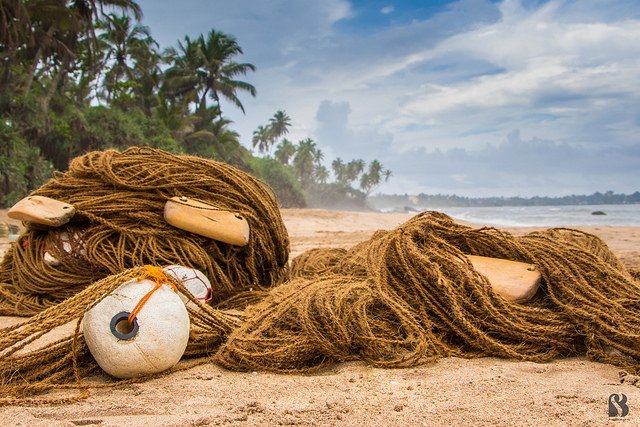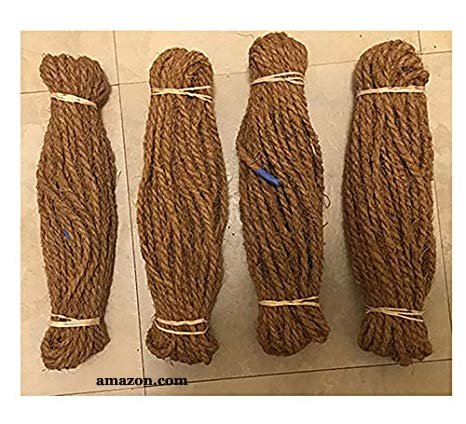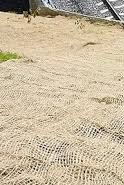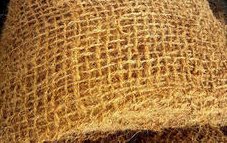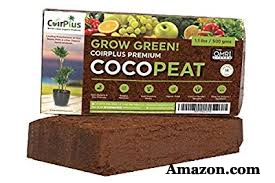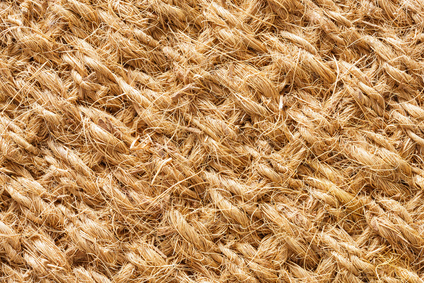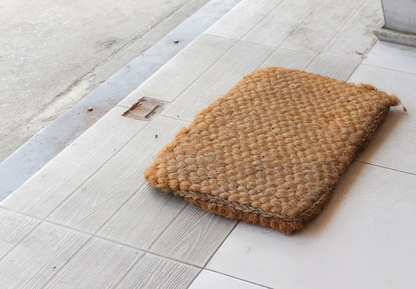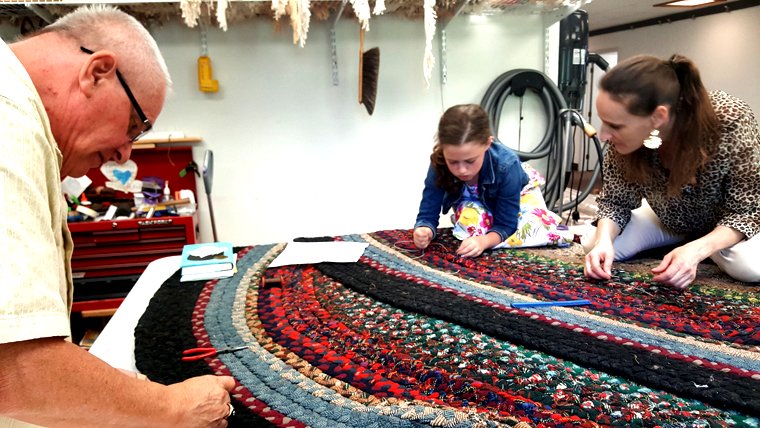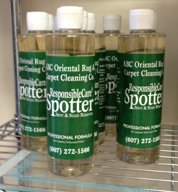COIR NATURAL FIBER
Coir natural fiber (pronounced COY-er) is familiar to most of us as the material used to construct coarse, wiry outside doormats as well as the coarse fiber liners found in hanging flower baskets.
The fiber originates as part of the common grocery store coconut. Each coconut is actually the single seed of a fruit of the coconut palm tree.
The coir fiber is retrieved from a layer of fibrous pulp that can be found under the external leathery skin. This pulp is stripped from the seed of the coconut palm before it is sent to market. In some countries, coir fiber is named ‘coprah.’
THE COCONUT PALM TREE
Coconut Palm trees flower monthly and it takes a year for each resulting fruit to ripen. Therefore, one tree always contains fruits at 12 stages of maturity. The fruits are harvested approximately every 45-60 days. They can be picked up off the ground if they have ripened and fallen or climbers may pick the fruit still on the tree.
In some areas, monkeys are taught to climb the trees and help with the harvest of the coconuts. Each tree can yield 50 to 100 coconuts a year.
The fruit of the coconut palm is exceptionally hardy. The tree itself is very useful, providing not only food and fibers, but drink, fuel, and building materials.
Coconut palms abound in the tropical regions of the world, although commercially produced coir comes mostly from India and Sri Lanka. Coconut palms originated in Southeast Asia and are grown in more than 93 countries in the world today. They are one of the oldest plant families and have been cultivated for around 4,000 years.
In Micronesia and Polynesia, coir was called sennit and sennit roping was the main way to connect pieces in the construction of boats, weapons, buildings, and tools until the introduction of iron nails from European explorers in the late 18th century.
Today, coir is also economically important in Brazil, Indonesia, the Philippines, Vietnam, Mexico, and the Ivory Coast among others.
PROCESSING COCONUTS INTO
COIR NATURAL FIBER
Ripe coconuts are husked immediately. Unripe coconuts are often seasoned for a month. They are spread out on the ground in a single layer to keep them dry.
If manual labor is used, in order to remove the coir fiber, the coconut will be placed on a steel spike to split the husk and then the pulp layer can be easily peeled off. If modern husking machines are used, they can split and peel about 2000 coconuts per hour!
There are 3 processing steps:
- Retting is the curing process.
- Defibering involves separating the fibers from the pith and the outer skin.
- Finishing follows last in the process of producing coir natural fiber.
Depending on the type of fiber to be processed, the curing or retting stage of coir natural fiber production results in significant water pollution, though research has begun to find ways to treat this problem.
TYPES OF COIR NATURAL FIBER
BROWN COIR
If the fibers are extracted from fully ripened coconuts, they yield brown coir, which is strong and highly resistant to abrasion. This dark brown coir is the one used mostly in floor mats, brushes, sacks, and upholstery padding. Fresh water is used to process brown coir. It is stronger than flax and cotton but not as flexible because it contains more lignin and less cellulose. It is unsuitable for dyeing as well.
WHITE COIR
If the fiber is extracted from the husks of coconuts shortly before they ripen, it is light brown or white in color, is softer and finer, but is not as strong as the brown coir. This type of coir is usually spun into yarn and woven into floor mats or twisted into rope or twine. Sea water and fresh water are both used to process white coir.
Fiber length is also important in coir natural fiber processing. Both the brown and white types of coir fibers range in length from 4 to 12 inches. Bristle fibers must be at least 8 inches long. Mattress fibers, which are finer in texture, are the shorter fibers. A 10 oz. coconut yields about 1/3 bristle fiber and 2/3 mattress fiber.
ADVANTAGES OF
COIR NATURAL FIBER
- It is resistant to salt water and it doesn’t sink. Thus, it is used to make fishing nets and marine ropes.
- It is very strong and nearly impervious to the weather. An important end product is agricultural twine, such as used by hops growers in the US to tie their vines to support poles, as well as in the construction of those familiar outdoor doormats.
It is very durable with the ability to hold water, as well as the fact it is biodegradable, makes it important in the production of geotextiles. These are covers for bare soil laid down to control erosion and to promote the growth of protective ground covers. Their hairy texture helps hold the seeds and soil. It can provide good soil support for up to 3 years. These geotextiles resist sunlight, facilitate seed germination, and are 100% bio-degradable with a slow rate of degradation, allowing them to last for several years on the ground.
- The ability of coir (and sisal natural fiber as well) to store up to about 30 percent humidity in a room and discharge it if there is not enough, allows these fibers to act as climate control in a room.
- It is used as a substitute for processed synthetic rubber in the upholstery industry and is also often combined with natural rubber for filling upholstery.
- It is used for insulation in panels and cold storage.
- Coir Ply is a new product used as a substitute or alternative to plywood. It has a high degree of surface abrasion resistance and resists contraction and expansion due to variations in temperatures.
DISADVANTAGES OF
COIR NATURAL FIBER
- Coir is an allergen. It is often infused with latex or other allergenic materials during its treatment.
- The waste material from the processing of coconuts to coir is called coir dust or pith. It makes up about 2/3 of the coconut pulp while the coir fibers account for approximately 1/3. It takes the coir dust 20 years to decompose. Piles consisting of millions of tons used to sit in India and Sri Lanka.
COCO PEAT
Fortunately, in the 1980s processes were developed to make the waste material of coir processing (dust/pith) into a growth medium called coco peat, now used as an alternative to other materials like peat moss and vermiculite.
ADVANTAGES OF USING COCO PEAT
FOR HORTICULTURE & AGRICULTURE
- It improves the air porosity of soils.
- It absorbs 30% more water than peat.
- It helps to loosen the texture of clay soil and improve drainage and it allows sandy soil to hold onto water longer.
- Its high lignin content increases its resistance to bacteria and disease.
- It is resistant to other pathogens in the soil.
- Peat Moss is acidic while most coir has a more neutral pH.
- Coco peat has good absorbent qualities and is a good oil absorbent for slippery floors. It is also used as a bedding in animal farms to absorb animal waste.
- Coir is more sustainable than peat.
- Peat moss use in horticulture has resulted in the deletion of natural bogs or swamps, an essential part of the wildlife ecosystem. (There are actually a number of highly adapted plant and animal species found only in peat bogs).
- Coir chips/chunks are also being produced and used to provide structure and improve the air porosity of a growing medium. They are specific size pieces of the coconut husk.
- ‘Treated Coir’ is available from reputable manufacturers. The coir pith will be stored or composted for 6 months to ensure there is no contamination from weeds and potential human pathogens.
DISADVANTAGES
OF USING COCO PEAT
There are some downsides to using coco peat as a replacement for traditional peat as a soil conditioner for plant cultivation:
- It is rich in potassium and a few micro nutrients, but not much else.
THE MANY END PRODUCTS OF
COIR NATURAL FIBER
Some examples of the end product uses for coir:
- Brooms
- Brushes
- Door mats
- Fishing Nets
- Floor mats
- Growing medium in greenhouse horticulture
- Insulation
- Mattresses
- Mushroom Growing
- Packaging
- Rope
- Sphagnum (Peat Moss Substitute)
- Terrarium substrate for reptiles or arachnids
- Upholstery padding for the auto industry in Europe
ADVANTAGES OF
COIR OUTDOOR MATS
- They dry quickly so mildew doesn’t have a chance to form.
- They clean dirt and moisture from shoes.
NOTE: Beware of thin coir outdoor mats that can be slippery. Sometimes a vinyl or rubber backing will be added and water from wet shoes can become trapped by the backing.
THE FUTURE OF
COIR NATURAL FIBER PROCESSING AND
COCO PEAT
Many of the developing coconut growing countries do not possess knowledge of the technology available to utilize the entire coconut husk for commercial purposes. Thus, production is usually scattered and in small volumes.
Today there are organizations attempting to promote best practices in coir processing to increase quantity and higher quality as well as to provide improvements in working conditions. The end result is expected to be higher profits and better income. Ultimately, this will help to reduce poverty and and will also provide environmental benefits from the commercial use of the coco dust/pith/ peat waste product.
"The Cleanest Clean You've Ever Seen."
by
ABC Oriental Rug & Carpet Cleaning Co.
130 Cecil Malone Drive Ithaca, NY 14850
607-272-1566
GIVE THE
GIFT OF CLEAN!

Why not think 'outside the box' and give
a Gift Certificate for professional carpet, upholstery, or tile
& grout cleaning from ABC for any special occasion!
Does a special person have a favorite area rug or oriental rug that needs cleaning or repair? Just give us a call. You'll make their day!
Bring in the mats from a car and we'll clean them as well.
Contact
us if you live in the Ithaca, NY or surrounding areas and we will
tailor a special gift certificate just for you for any Special Occasion.

ABC
Carpet & Rug
Spotting Guide
ABC
Carpet & Rug
Spotting Guide
Learn how to remove spots with ordinary household solutions
Sign up below to gain access to your complementary Spotting Guide from ABC.
Registering your email address guarantees you will be notified whenever discount savings coupons become available.
Did you know that our ABC Responsible Care Spotter can get those pesky spots out of your carpet and rugs and will work equally as well on your clothes and upholstery?
Stop by our office and pick one up. They are $5.00 + Tax but if you have carpets or upholstery cleaned in your home or business, just request a free one from your Technician.
And don't forget to fill out the form above to download your free ABC Spotting Guide!
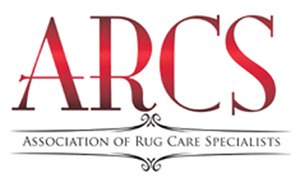
ABC Oriental Rug & Carpet Cleaning Co.
is a FOUNDING MEMBER of the
Association
of Rug Care Specialists.
"To Teach, Cultivate and Advance the Art and Science
of Rug Care"
As of October 1, 2018, we have joined with One Tree Planted.org to help with sustainability and reforestation on our planet by planting trees!
For more information on One Tree Planted.org, please see our article.
Our Press Release can be reached below:
Cleaning Company Announces Partnership with One Tree Planted.org